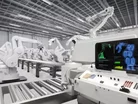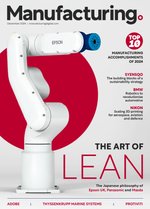Robot density is on global rise

According to the International Federation of Robotics (IFR), there are 74 robotic units to every 10,000 employees in the manufacturing sector.
The average robot density has increased from 66 units to 10,000 people in 2015, the 2017 World Robotics Statistics report states.
When broken down into regions, Europe represents the highest density of robots at 99 units, followed by the Americas with 84 units, and Asia with 63 units.
The report also announced the top augmented countries across the globe – South Korea, Singapore, Germany, Japan, Sweden, Denmark, the US, Italy, Belgium, and Tawain.
SEE ALSO:
-
The launch of Falcon Heavy launches a new precedent for manufacturing
-
Novo Nordisk to invest $65mn into diabetes care manufacturing site expansion
-
Accelerate manufacturing innovation with secure access controls
“Robot density is an excellent standard for comparison in order to take into account the differences in the automation degree of the manufacturing industry in various countries,” reported the President of the International Federation of Robotics, Junji Tsuda.
China has demonstrated one of the strongest growths with robot density – more than doubling its density in three years, from 25 units in 2013 to 68 units in 2016.
The country ranks 23rd in the world for its ratio of robots to workers.
South Korea’s density is the highest in the world, being 8 times as high as the global average at 631 units to every 10,000 employees.
The US has 189 units, Germany has 309 units, France has 132 units – ranking 18th in the world – and the UK has 71 units – ranking 22nd.
- China Cements Clean Energy Manufacturing Powerhouse StatusSustainability & ESG
- The Merck Group: China & India, History & Innovation Part 2Procurement & Supply Chain
- The Merck Group: China & India, History & Innovation Part 1Procurement & Supply Chain
- Chinese Clean Car Manufacturers Excel in EuropeSustainability & ESG

